

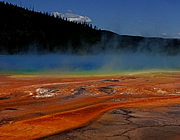
Vividly colourful, thermally active, spouting geysers and bubbling hot pools.
See also SE Yellowstone & North Yellowstone
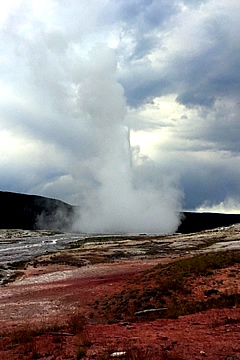
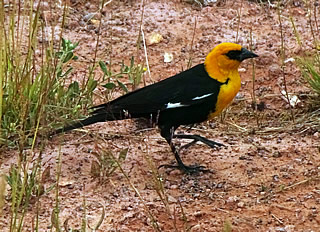
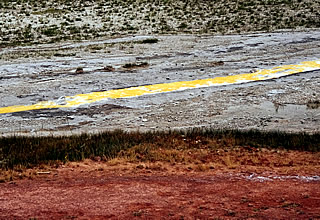
Old Faithful Geyser1 is famous, so of course you have to go and see it, but we thought there were many more beautiful and impressive sights in Yellowstone.
The geyser's claim to fame is that it is so predictable, on average every 92 minutes, though it can be as little as 51 minutes or as long as 120 minutes.
However, Upper Geyser Basin has much more to see: multi-coloured rocks, bubbling thermal springs and deep clear pools.
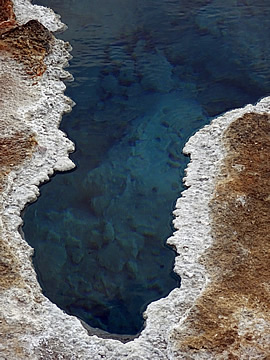
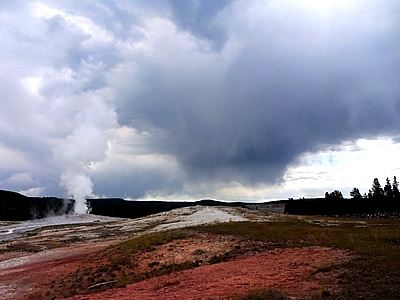
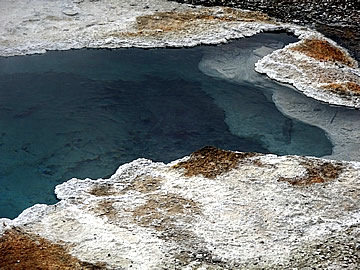
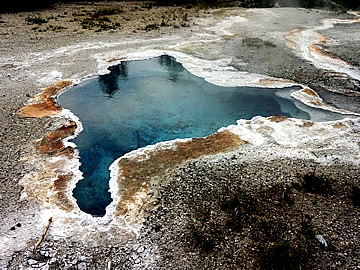
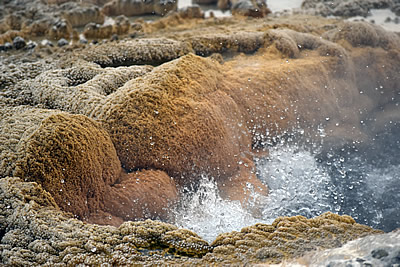
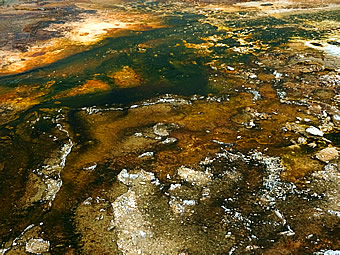
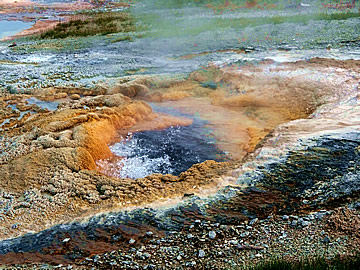
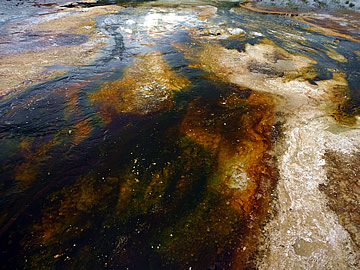
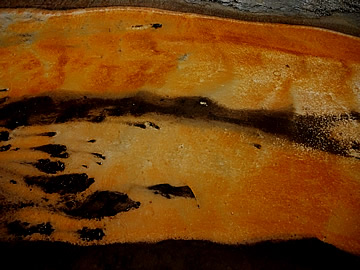
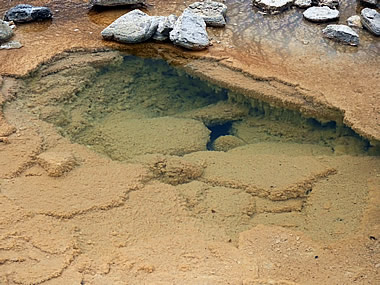
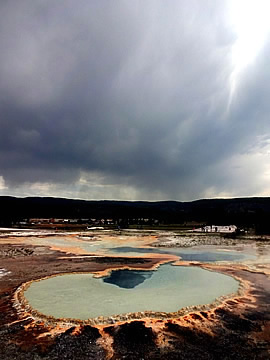
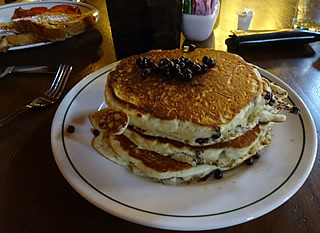
We had a very good breakfast at the Old Faithful Inn. I had a short stack of huckleberry pancakes - three thick pancakes with blueberry syrup. Huckleberries are like blueberries but smaller and very intensely flavoured. I managed to eat about half.
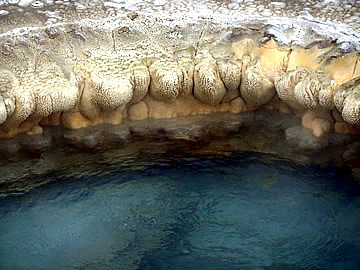
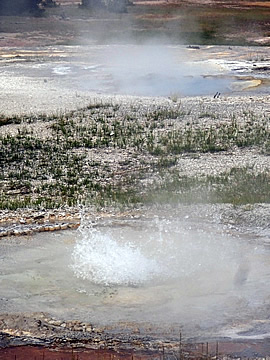
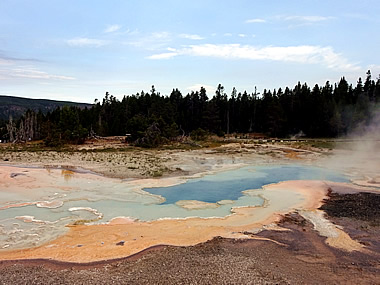
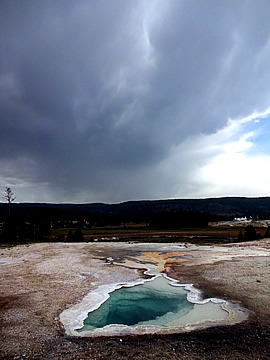
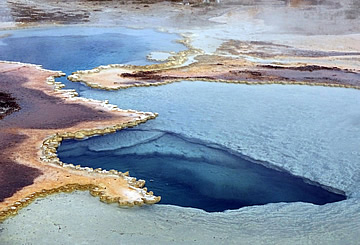

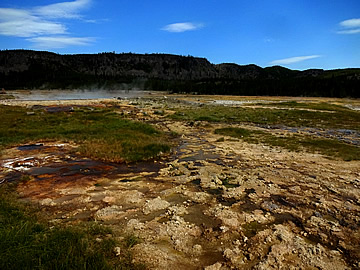
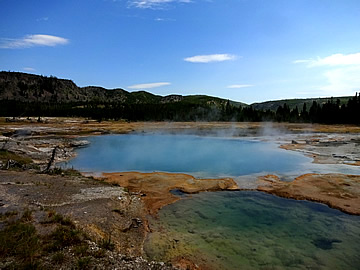
Biscuit Basin is 5 km north of Old Faithful. It was named for the unusual biscuit-like deposits that used to surround Sapphire Pool but these were destroyed when Sapphire erupted in the 1959 Hebgen Lake Earthquake.
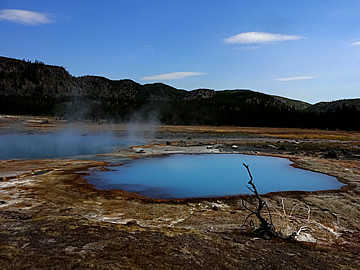
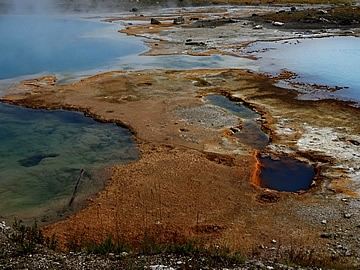
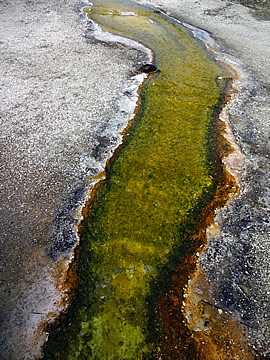
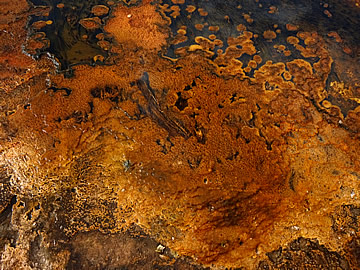
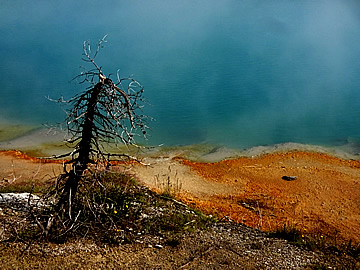
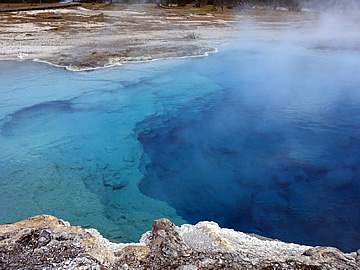
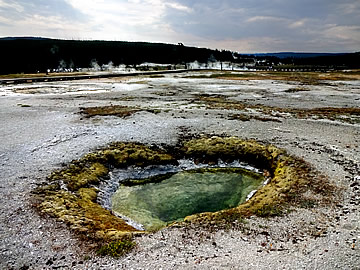
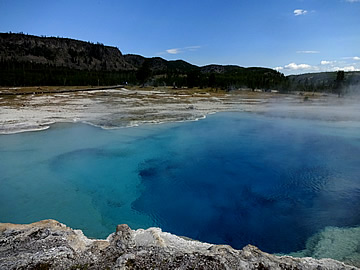
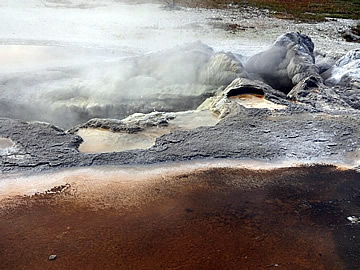
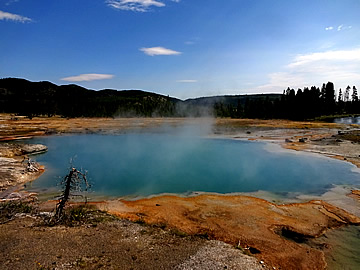
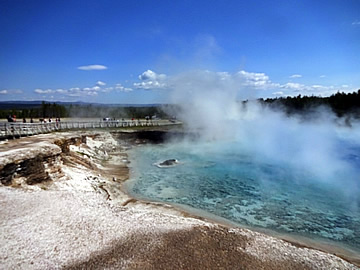

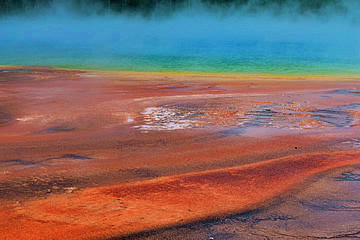
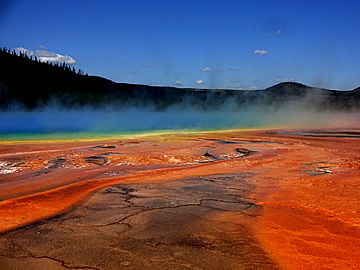
A few bright blue thermal pools and the undisputed highlight of Grand Prismatic Spring in Midway Geyser Basin, north of Upper Geyser Basin.
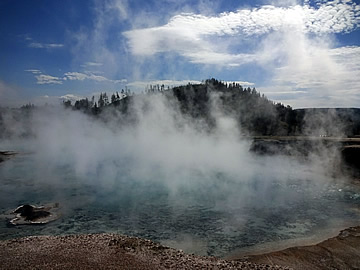
The water of Grand Prismatic Spring is a deep blue caused by light scattering from particles in the water. On the shore of the pool are deposits of vivid yellow and orange thermophiles. Grand Prismatic is the largest hot spring in Yellowstone, stretching 61m across and with a water temperature of 70 °C.
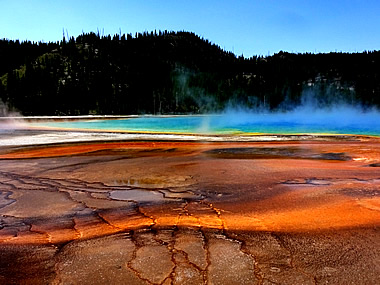
Magma from an underground volcano heats water which forces its way to the surface through fissures in the rocks, creating the steaming spring which pours almost 2,000 litres of hot water a minute into the Firehole River.
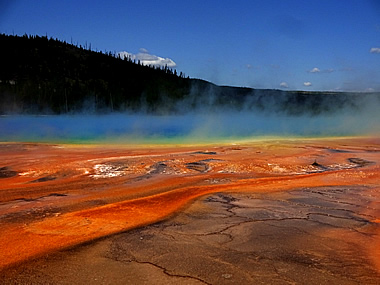
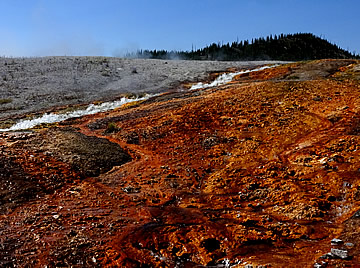
Mats of organisms in the colourful landscape are symbiotic in nature. Microbes near the surface of the inches-thick mats use sunlight to perform photosynthesis while those below gain their energy from chemicals produced by the surface microbes.
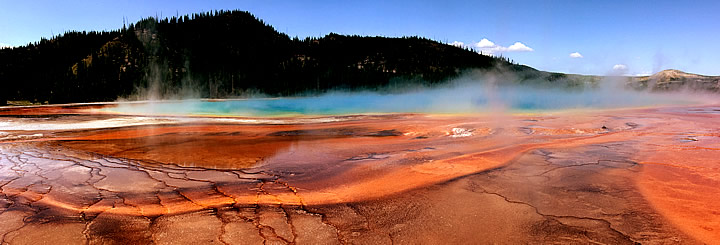
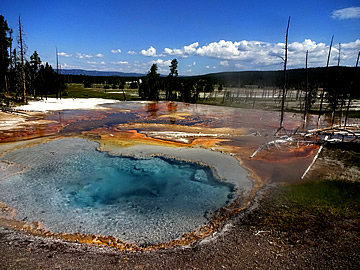
Firehole Lake Drive lies on the east side of the loop road between Lower and Upper Geyser Basins.
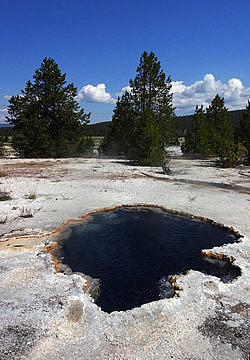
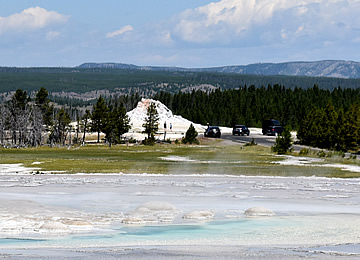
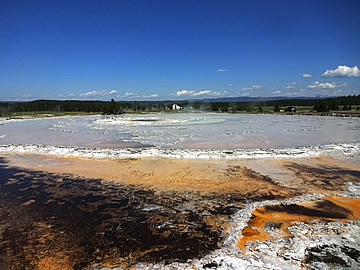
There is parking at Firehole Lake, the largest hot spring in this area, and boardwalks.
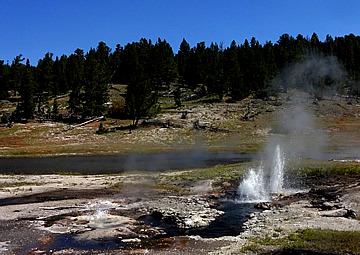
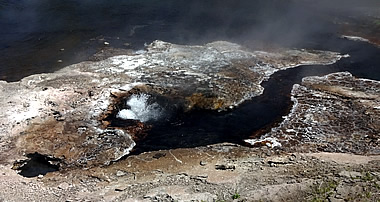
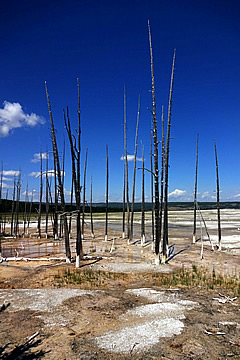
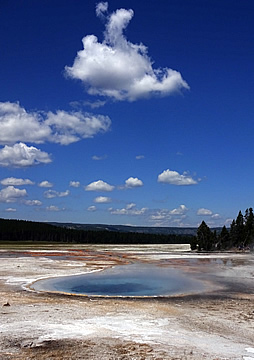
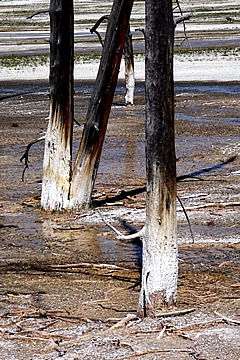
Fountain Paint Pot is within Lower Geyser Basin and a short (less than 1km) loop boardwalk makes it an easy visit, passing hot springs, pools, thermophile mats and geysers.
Near the start of the trail are some very good examples of the "Bobby Socks" trees - silica dissolved in rising super-heated water penetrated the lower parts of the trunks of lodgepole pines leaving a white deposit.
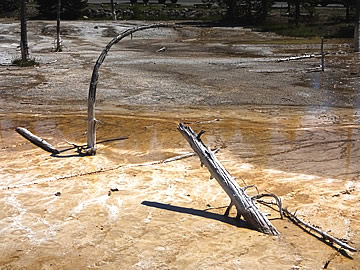
As in many areas of the park, thermophiles thrive in the hot springs: typically yellow-green thermophiles at around 75°C, orange and brown in cooler water.
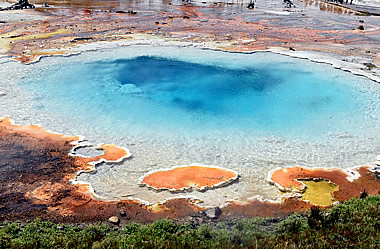
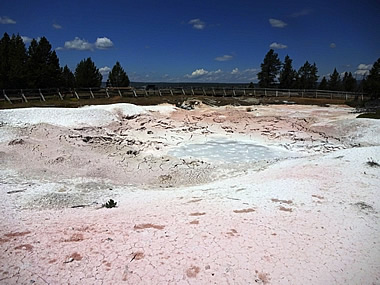
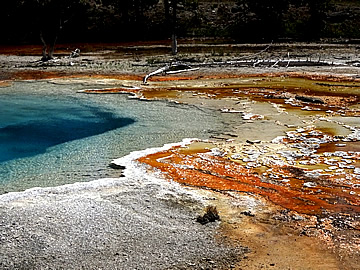
The bubbling mud pool that forms Fountain Paintpot is created by volcanic heat boiling water deep underground which then forces its way up to the surface, along with other gases such as hydrogen sulphide. Thermophiles consume some of the gases to create sulphuric acid which then breaks down the rock to form clay.
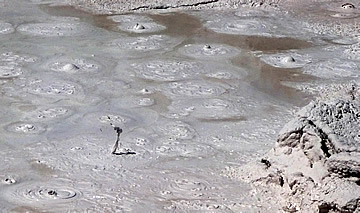
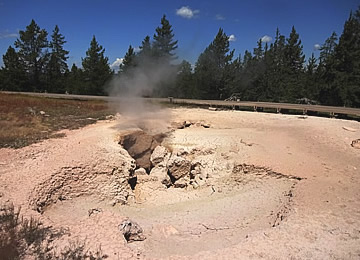
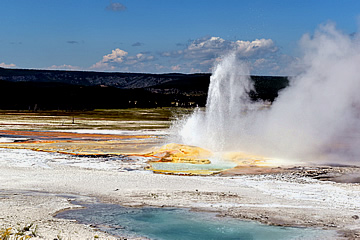
Scientists searching for life outside of earth study such extreme environments as these mud pools where thermophiles survive.
Red Spouter was born from the 1959 Hebgen Lake earthquake which measured 7.3 on the Richter scale, the most powerful in this area in recorded history. It ejects reddish water when the water table is high, but subsides to a muddy pool in late summer.
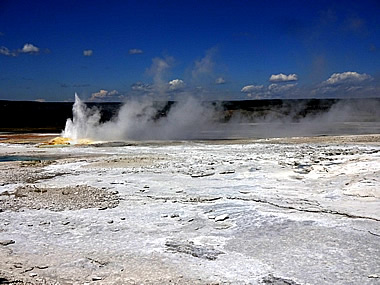
Clepsydra Geyser erupts virtually all the time - clepsydra is Greek for "water clock" and the name was given because it used to erupt every three minutes, but since the Hebgen earthquake in 1959 it has erupted almost constantly.
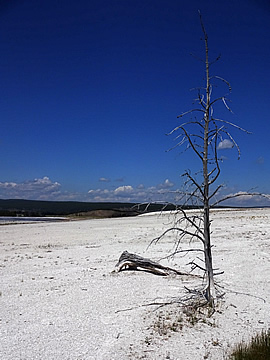
Between the tree-clad hills are some fine desolate landscapes.